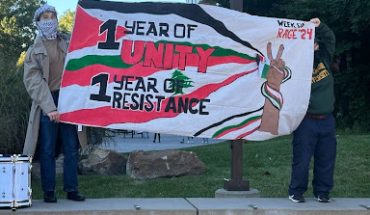Asian American students led a discussion on the challenges and stereotypes they face
By Diana Nadira, Contributor
As a part of ODIME’s Asian Pacific American Heritage (APAH) month celebration, a panel discussion on “Dreams, possibilities and challenges for APA students” was held. The event was sponsored by Multilingual Multicultural Education Student Interest Group (MMESIG) and MME Division of GMU College of Education and Human Development on Thursday, April 19.
Asian Pacific American (APA) is a term used to signify both Asian American – people in the USA who have Asian decent – and Pacific Islanders – people who have ancestry among native people in Oceania. They are the fastest growing ethnic group in the U.S, but perhaps the least understood in terms of history, immigration and social, racial and economic justice.
According to the Center for Migration Studies (CMS) and the Migration Policy Institute (MPI) the total number of Asian undocumented people in the United States ranges from 1.46 million to 1.74 million and has tripled within the last 15 years. The complex immigration status holds back undocumented adolescents from achieving better opportunities.
“In Virginia if you are undocumented you can’t get a driver’s license. Nowadays most of the jobs require a driver’s license,” said Dr. Shelley Wong, Mason associate professor in Multilingual Multicultural Education. “Undocumented students are not eligible for any federally funded student aid. They have to pay the school tuitions out of state which is so much higher than the in-state fees. These are just two challenges among a number of them.”
The situations of undocumented students improved when President Obama launched DACA (Deferred Action for Childhood Arrivals) programs. It helped them to achieve a degree of stability and reach more possibilities. According to Migration Policy Unit (MPI) 728,000 people who came to the United States as children – known as “Dreamers”- received a chance to reprieve their deportation for two-years, work legally for a temporary period and get a driver’s license in the United States. However, DACA’s future is now uncertain after the Trump administration.
“DACA is like an emergency patch which can sort of heal the wound. It allows student to go to school. It allows to work and drive. Those are the living necessities that we need,” said Sumi Yi, NAKASEC Virginia Community Organizer.
“Still DACA is a temporary remedy. The renewal is only for two years. Although DACA is immediately needed, what we actually want as a permanent solution is citizenship for everyone and that’s where we are heading right now,” Yi said.
Ted Gong, the executive director of 1882 Foundation, transitioned his discussion by pointing out the challenges of bringing a single Asian Pacific American platform.
“The diversity of APA community is so large, and their needs are diversified as well,” Gong said. “I don’t think we are there to have a single APA platform since the immigration situations, economic background and political perspectives are very different. But one thing is clear that what we need is an Asian Pacific American coalition. We have to address the civil rights issues together.”
In colleges when APA students come across challenges regarding immigration and policy changes or even day to day stresses they don’t reach out to any organization, especially if there is not an established one. So, having more events like this shows them that there are communities here on campus that care about them and want to make more connections which will build a strong supporting networking system, said Elisabeth Chan, president of MMMESIG.
Photo by Allie Thompson




